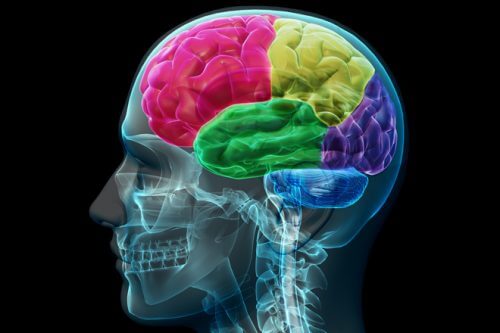Will viruses be able to break through the protective cell wall that surrounds the brain and pave the way for large-scale drug brain treatment?
By Monique Broyt, The article is published with the approval of Scientific American Israel and the Ort Israel network, 17.07.2016

The brain poses a unique challenge to those involved in drug therapy: it is protected by an impenetrable layer of dense cellular tissue called the blood-brain barrier. Although this barrier protects our control center from the intrusion of harmful chemicals and bacteria, it also blocks about 95% of drugs taken orally or injected directly into a vein. Because of this, doctors treating patients suffering from degenerative diseases of the brain and nervous system, such as Parkinson's, are often forced to inject drugs directly into the brain in an invasive procedure that requires drilling into the skull.
In some cases, scientists have succeeded in injecting drugs through the blood-brain barrier with the help of ultrasound waves or nanoparticles, but the success of such treatments is limited, since they only work on small target areas in the brain. Recently a breakthrough was achieved in the field: Viviana Gradinero, a scientist specializing in brain research, and her colleagues at the California Institute of Technology proved that a harmless virus can pass through the barrier and deliver with it a drug treatment that affects the entire brain.
Gradinero's research team decided to focus on viruses since these infectious agents are quite tiny and adept at penetrating cells and inserting their genetic material into the host cell's DNA. Viruses are also equipped with a protein coat that can carry and deliver drugs or genes to the brain for gene therapy. In order to find a virus suitable for introduction into the brain, the researchers engineered a certain strain of adenoviruses (adenoviruses) and created millions of versions that differed from each other by slight changes in the structure of the protein shell. Then, inject the engineered versions into lab mice. After a week, the researchers isolated the viruses that managed to penetrate the barrier into the mouse brain and identified the viral version that was up to the task, which they designated AAV-PHP.B.
In the next step, the team of researchers examined whether the AAV-PHP.B virus could be used as a potential carrier of genes in gene therapy, a method of curing diseases in which new genes are inserted into cells or genes already present in the cell are replaced or neutralized. The researchers injected the virus into the bloodstream of mice. In this case, the virus carried genes that encoded a fluorescent protein that glowed with green light. And so, if the virus managed to penetrate the mice's brains and inject the new DNA it carried into the nerve cells, it is possible to estimate the success rate in the experiment based on the measurement of the green light in the surgery. Indeed, in the observations made by the researchers, it was found that the virus penetrated most of the mice's brain cells, and these continued to glow even after a whole year. The research findings have been published Recently in the journal Nature Biotechnology.
In the future, it will be possible to apply this approach to the treatment of several diseases of the brain and nervous system. "The ability to transfer genes to the brain in a non-invasive way is going to be very useful as a research tool. It also has tremendous potential in the clinical field," says Anthony Zeidore, a neuroscience expert who studies the branched neural connections in the brain at the Cold Spring Harbor Laboratory. Gradinero believes that this method is expected to prove its effectiveness not only in the study of the brain and its treatment, but also regarding other target areas, such as the peripheral nervous system. The huge number of peripheral nerves makes it extremely difficult to treat the pain associated with diseases in the peripheral nervous system. A balm for the patients' pain may be found in a virus that can penetrate each and every one of these nerve cells.
